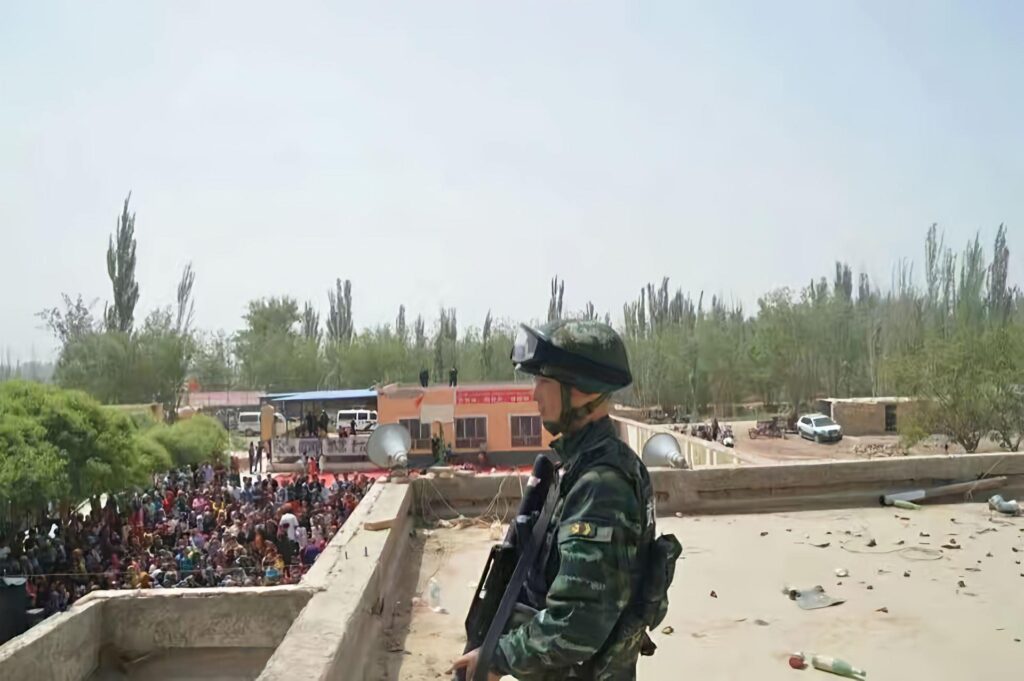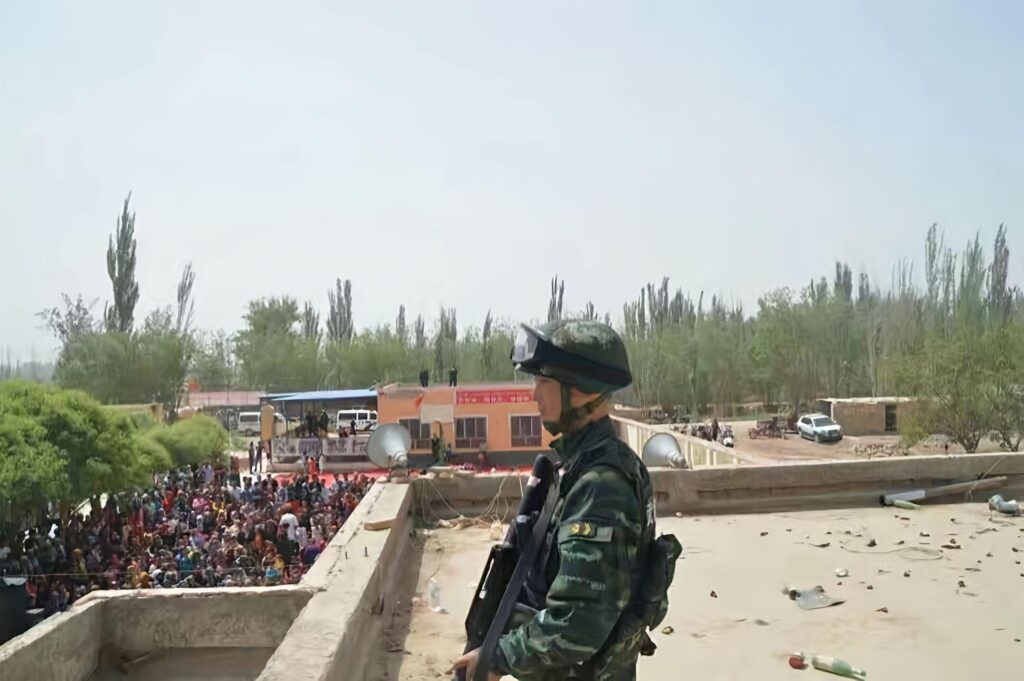
Tahir Imin Uyghurian
This photograph depicts what was, for many Uyghurs, a commonplace reality of our upbringing. Growing up in Poskam, Kashgar, I saw Trial Assemblies of this scale from my early school days until I finally left my hometown. This particular image powerfully highlights one of the most frequent, and deeply intimidating, scenes from that time—a military presence exerting control over the entire community.
🖼️ Core Image Description

This image depicts an event strongly characterized by surveillance and military presence in a seemingly arid, rural environment. The focus is split between a uniformed figure in the foreground and a large crowd in the background, offering a stark visual contrast of power dynamics.
- Foreground (Surveillance & Authority): Dominating the right side is a Wǔjǐng (武警) — a member of the People’s Armed Police (PAP) — in camouflage fatigues, holding a firearm, and wearing a helmet. He is positioned on the rooftop of a low-rise building, looking down and outward over the crowd and the surrounding area. His elevated position and military gear clearly signify an active role in security and oversight.
- Midground (The Assembly Site): The roof the Wǔjǐng stands on appears to belong to a building that serves as the central point for the assembly. Two large loudspeakers are visible on the edge of the roof, suggesting a public announcement or address is taking place, consistent with a “Trial Assembly” (Gōngpàn Dàhuì or Public Sentencing Rally).
- Background (The Crowd and Setting): Hundreds of individuals, identified as Uyghurs based on the context provided, are densely packed in an open, dusty space below. They appear seated or standing, facing the central building. The setting is characterized by sparse, tall trees typical of an oasis town in the Xinjiang/East Turkistan region (like Aksu Prefecture), with other low-rise structures and several vehicles visible further in the distance. The lighting suggests a bright, midday sun.
📜 Contextual & Analytical Interpretation
Based on the UFI’s acquired information (Aksu, 2017, Trial Assembly), this photograph can be analyzed through a specific cultural-political lens:
- The Nature of the Event: A “Trial Assembly” (or Public Sentencing Rally) is a historical tool of political control. Its function is not purely judicial but primarily performative and intimidating, serving to publicly demonstrate the state’s power, deliver harsh sentences, and deter dissent. Holding such an event for hundreds of Uyghurs underscores a period of heightened state security campaigns and mass surveillance in the region, particularly around the 2017 timeframe.
- The Wǔjǐng’s Role: The PAP officer’s elevated position is not merely for security; it is a visual statement of total control and omnipresence. By standing over the crowd with a weapon, he embodies the state’s absolute authority and the threat of force, ensuring the assembly proceeds without disruption and reinforcing the message of fear to the audience.
- The Cultural-Political Problem: The image powerfully captures the militarization of civilian life in the Uyghur homeland. A judicial or political gathering is fundamentally overseen and dominated by armed forces. The photograph illustrates a crucial point of Uyghur marginalization and suppression—the community is relegated to the role of a supervised audience, subjected to political spectacle under military watch, rather than participating as citizens in a free judicial process.
- Source Verification Note: The information attributing the image to 2017 in Aksu, as shared by the Chinese social media account Xiao gui hun hun (小鬼混混), is an important, though unverified, piece of metadata that grounds the image within the known timeline of intensifying state control measures in Xinjiang.